Get You Back Home
The
Punk
Paper: A Dialogue
Esther
Leslie and Ben Watson
 B:
When formulating his ideas about money and capital - sketches for the great
work Capital which were eventually published under the name Grundrisse - Karl
Marx developed a critique of conventional ways of writing history. When people
relate history as a succession of events unfolding in time, they distort reality
by assuming that concepts that were actually the
product of historical developments were always in existence. He complained that
people project back concepts like human equality, money-making and commercial
calculation into the mists of time, when these are actually only possible once
there is an infrastructure of trade, roads and manufacture. If Punk
is approached retrospectively as a successful pop
phenomenon, a fashion wave, a raft of new celebrities, our understanding is
coloured by a similar kind
of back projection. Commercialised anger didn't exist before punk - rap would
have been impossible without it - and situationist ideas now accepted as commonplace
were inaccessible to anyone but intellectuals. At
the time, Punk felt like risk and truth, not scam, celebrity and money.
B:
When formulating his ideas about money and capital - sketches for the great
work Capital which were eventually published under the name Grundrisse - Karl
Marx developed a critique of conventional ways of writing history. When people
relate history as a succession of events unfolding in time, they distort reality
by assuming that concepts that were actually the
product of historical developments were always in existence. He complained that
people project back concepts like human equality, money-making and commercial
calculation into the mists of time, when these are actually only possible once
there is an infrastructure of trade, roads and manufacture. If Punk
is approached retrospectively as a successful pop
phenomenon, a fashion wave, a raft of new celebrities, our understanding is
coloured by a similar kind
of back projection. Commercialised anger didn't exist before punk - rap would
have been impossible without it - and situationist ideas now accepted as commonplace
were inaccessible to anyone but intellectuals. At
the time, Punk felt like risk and truth, not scam, celebrity and money.
Of course,
Marx isn’t stupid enough to announce - in the approved Deleuzian manner - that
all we need to do is to simply rid ourselves of concepts. He began The German
Ideology by accusing the Young Hegelians of plotting a revolt against the rule
of concepts [Karl Marx and Frederick Engels, The German Ideology, 1846, first
published 1932; translated W. Lough (pp. 19-92), Clemens Dutt (pp. 94-451) and
C.P. Magill (pp. 453-540), London: Lawrence & Wishart, 1976, p. 23], and
pointed out that ‘all relations can be expressed in language only in the form
of concepts’ [Ibid, p. 363]. There is no non-conceptual access to the meaning
of the past. In order to understand the past without hypostatising current concepts
as eternal fixtures, we need to determine the sequence of conceptual categories
in modern bourgeois society, which is ‘precisely the opposite of that which
seems to be their natural order or that which corresponds to historical development’
[Karl Marx, Grundrisse, 1857, first published in Russia 1939/41, in Germany
1953; translated Martin Nicolaus, London: Penguin, 1973, p. 107]. The Sex Pistols
were not an innocent teenage band who were sucked into the endeavours of capital,
they were a destructive consciousness which applied the most advanced critical
ideas of their time.

They would
not accept the postponement latent to capital's wagers on the productivity of
future labour. These principles were misinterpreted in the mass media throughout
the 80s and 90s. Only now, with the emergence of the anti-capitalist movement,
can Punk's anti-commodity populism be properly understood.
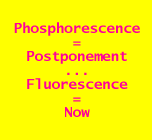
E: A century
before Punk emerged as latest rebel youth subculture,
the word itself meant something else: it meant something worthless, foolish,
rubbish, empty talk, nonsense: such that Carlyle could speak of ‘phosphorescent
punk and nothingness’ However when it came to future
dreams for colour schemes punk preferred fluorescence’s
immediate shock of the intensified glow to phosphorescence’s postponed illumination
of its self in the darkness. Fluorescence holds nothing back for later - like
punk, its mode is the mode of anti-interiority,
denial of romantic self, a cheap trick, a cheap trip without innerness, an upfront,
slap in the face of public taste.
B: The reason
that Marxism has a poor reputation in cultural analysis is to do with confusion
over the necessary granularity required to grapple with specific experiences.
Simple statements about capital, proletariat and commodification are in danger
of sounding true for all time - or at least, true from the late eighteenth-century
through to the twenty-first, which from the point of view of one’s personal
relationship to musical fashion, can look like the same thing. In order to look
at Punk, the Marxist needs to build on the substantive
categories of capital and class, but beyond that, must denature the categories
specific to pop music under capitalism. In other words, Punk
cannot be understood by simply narrating its events in chronological order,
as Jon Savage did in England’s Dreaming. Its determinations can only be unpicked
by examining the latest developments in the contradictions it exploited, which
means understanding the current relationship of capital and commodification
to musical truth. The current marketing of The Strokes as "the most shaggable
band in Britain", the issue of the black blocks in Genoa last July and
the challenge to the radicalism of rock guitar-sound introduced by Derek Bailey
are all more relevant to understanding the politics of the Sex Pistols than
anecdotes about the Jubilee boat trip. That is why Jon Savage’s narrative betrays
and tames the very movement it sought to explain: it projects back the success
of Punk into its history, and therefore presents
yet another cosy and positive tale of rags-to-riches. Since this is also the
story of Jon Savage, now a successful member of the Popsicle Academy, we are
really reading autobiography in drag.
One way of
blowing apart the dead inevitability of history written with hindsight - its
placid affirmation of the status quo - is Walter Benjamin’s method of seizing
on a significant detail. This was actually a development of Benjamin’s reading
of Marx’s Capital. Benjamin’s hallucinogenic focus on a single detail jolts
a moment from its place in a preordained sequence of events, and lets in the
multivalent possibility inherent in human action. As Hegel said in the smaller
Logic, para. 143, ‘Viewed as an identity in general, Actuality is first of all
Possibility.’ [G.W.F. Hegel, Logic, 1817/1827, translated William Wallace, 1873,
Oxford: OUP, 1975, p. 202]. This is an insight that Savage never dreamed of.
The Punk story told in terms of chart placements and fame immediately puts Punk
back in the pop logic it was a protest against, whereas reveries about shopping
schemes, council tenancies, bondage and Day-Glo
can take us back into the first moments of Punk’s
immediacy, its shock and exhilaration - the heretical idea of living historically
instead of at the behest of the needs of capital accumulation. No past, no future,
no capital, no mortgage payments.

E: Day-Glo
was the colour of choice for punk. Day-Glo
had been around for some time when punk appropriated it. In the 1930s, after
one of them received a bonk on the head and a spell of recuperative treatment
under ultra-violet light, Bob and Joe Switzer, eager young experimenters, were
mucking around with dyes and resins to make colours that were brighter than
normal and glowed under u.v. light. They used these new fluorescent colours
in their hokey little magic shows. The colours were eye-catching, because they
shone brighter than other colours. It was as if a new part of the spectrum had
been discovered. Day-Glo
colours are composed of fluorescent materials. Colour arises in ordinary objects
through selective absorption. Ordinary paint absorbs some of the spectrum from
white light and reflects the rest. Red paint absorbs blue and yellow, resulting
in the scattering back of only red. Day-Glo
paints do not simply scatter back light from the visible part of the spectrum.
They can also take shorter wavelengths (usually ultraviolet) that are invisible
to our eyes and they re-emit the energy by converting it into photons of longer
wavelength. Thus, ultraviolet light goes in and its energy is converted into
visible light emitted by the chemicals in the paint, creating the bright fluorescent
quality. Fluorescent materials emit more red light for example, than ordinary
red objects because they take some of the ultraviolet light that is invisible
to our eyes and emit it as visible light. Day-Glo
lets more be seen - it shines brighter. In 1936 the Switzer brothers set up
a firm in Cleveland. War came and the colours found military application in
bright signal panels used by the army, but peace put them back into civilian
use on billboards, in safety signage and promotional publicity, and soap powder
boxes. Outside the military context, Day-Glo was associated with vulgarity -
the too obvious - the screamingly evident.
 In the
1950s the name Day-Glo was trademarked and in the late 1960s the company formally
changed its name from Switzer Bros Inc to Day-Glo Colour Corp. In their names
one can hear the poetry of science, industry and space exploration. The full
trademarked pigment set comprises Neon Red, Rocket Red,
Fire Orange, Blaze Orange, Arc Yellow, Saturn Yellow, Signal Green, Horizon
Blue, Aurora Pink, Corona Magenta, Strong Corona Magenta, Strong Saturn Yellow.
Day-Glo
first infiltrated the American landscape as entertainment then as an alert to
danger and later as commodity shriek. A fan of Ultraviolet light, who runs a
website dedicated to its discussion, writes of a trip to Disneyland in the Summer
of 1961. There he rode through psychedelic landscapes - such as the Alice
in Wonderland ride - made of Day-Glo
scenes extra-illuminated
under u.v. light. Day-Glo
fluorescent paint was
fairly easy to get hold of in the 1960s - it became a household word through
Tom Wolfe’s book on Ken Kesey and the Pranksters. It remained a bad taste product,
acceptable only to commercial art, where Psychedelia found a use for it in posters
and it found its way into film. In the entry on the word Day-Glo
the OED quotes an article
from the Listener, from 1968, which condemns the use of flashing Day-Glo
colours as vulgar signal
of an orgasm in a film by Jack Cardiff. The hippies used Day-Glo
in their cultural artefacts,
and even on their bodies, but theirs was an attempt to paint over the world
in the colours of their hallucinogenic trips. Day-Glo
was being taken into
the student bedroom, the kids’ blacklit den where individual mediation could
hinge on the wonders of a perceptual trick that disappeared when normal electricity
resumed.
In the
1950s the name Day-Glo was trademarked and in the late 1960s the company formally
changed its name from Switzer Bros Inc to Day-Glo Colour Corp. In their names
one can hear the poetry of science, industry and space exploration. The full
trademarked pigment set comprises Neon Red, Rocket Red,
Fire Orange, Blaze Orange, Arc Yellow, Saturn Yellow, Signal Green, Horizon
Blue, Aurora Pink, Corona Magenta, Strong Corona Magenta, Strong Saturn Yellow.
Day-Glo
first infiltrated the American landscape as entertainment then as an alert to
danger and later as commodity shriek. A fan of Ultraviolet light, who runs a
website dedicated to its discussion, writes of a trip to Disneyland in the Summer
of 1961. There he rode through psychedelic landscapes - such as the Alice
in Wonderland ride - made of Day-Glo
scenes extra-illuminated
under u.v. light. Day-Glo
fluorescent paint was
fairly easy to get hold of in the 1960s - it became a household word through
Tom Wolfe’s book on Ken Kesey and the Pranksters. It remained a bad taste product,
acceptable only to commercial art, where Psychedelia found a use for it in posters
and it found its way into film. In the entry on the word Day-Glo
the OED quotes an article
from the Listener, from 1968, which condemns the use of flashing Day-Glo
colours as vulgar signal
of an orgasm in a film by Jack Cardiff. The hippies used Day-Glo
in their cultural artefacts,
and even on their bodies, but theirs was an attempt to paint over the world
in the colours of their hallucinogenic trips. Day-Glo
was being taken into
the student bedroom, the kids’ blacklit den where individual mediation could
hinge on the wonders of a perceptual trick that disappeared when normal electricity
resumed. It
took punk to fully assimilate Day-Glo
without transforming
it - that is vulgarity and all - in fact because of its bargain-basement, eye-catching
impudence. Jamie Reid’s cover for Never Mind the Bollocks
modelled itself on a crude supermarket display. This was consumer society staring
itself in the face. Art, as ever, was behind the times when Peter Halley began
to use Day-Glo
paints in his abstractions
in the 1980s. Punk had already camouflaged itself in the colours of the antagonist.
It
took punk to fully assimilate Day-Glo
without transforming
it - that is vulgarity and all - in fact because of its bargain-basement, eye-catching
impudence. Jamie Reid’s cover for Never Mind the Bollocks
modelled itself on a crude supermarket display. This was consumer society staring
itself in the face. Art, as ever, was behind the times when Peter Halley began
to use Day-Glo
paints in his abstractions
in the 1980s. Punk had already camouflaged itself in the colours of the antagonist.
B:Apart from
his absurd tease that the Sex Pistols were not a punk band, Stewart Home's analysis
of punk - because it has some relation to dialectical non-affirmative concepts
- has been the most helpful. In maintaining that its root politics were either
anarchist or fascist - by which he means irretrievably petit bourgeois and individualist
- he breaks out of the narrow view that pop may only be discussed in its own
terms: a stupid and inert reflection of the economic categories of its primary
distribution. If music is not real unless it reaches the charts, if there is
no everyday life outside practices which allow capital to realise surplus value,
then there is no escape from ideology, everything is a sequence of deracinated
images, and when I take a shit, I don't exist.

This is not
the consciousness addressed by Punk. Indeed, Punk
refurbished chart music and mass celebrity as potential sites for critique,
bringing back into social dialogue drives and ambitions which would otherwise
have been driven underground into daydreams, classical revolutionary politics
or backwater academia. In Home's analysis, Punk is seen as a radical art practice,
and it is made to stand or fall by reference to the most advanced ideas of that
milieu, which means those of the Situationists.
However, in
performing his ideological critique of Punk, Home steers dangerously close to
an idealism which underestimates the intelligence of the real, and only pays
attention tthose who treated Punk as a soapbox for political broadcast. Situationist
rhetoric was dependent on the particular situation of artistic radicals in post-war
Paris: an artistic world capital that was losing hegemony to New York, a left
establishment which had made a historic compromise with Communist state-capitalism
in Russia, and a surrealism deaf to the claims of music as a truth-testing of
social repression. Once transplanted to London, situationist ideas entered into
a completely different relation to the establishment. There was no question
of organising advanced artists to take seriously a surrealist objection to bourgeois
social relations, since modern art in Britain - Francis Bacon, Henry Moore and
Frank Auerbach - was a parochial parody of the movements which had swept Rome,
Moscow, Paris and Berlin, utterly uncomprehending of the continental avantgarde’s
anti-art dynamic.
E: The problem
of English art is a long-standing one. The seeds of English visual radicalism
have been few and far between, and generally imported.
B: To those
fifty readers addressed by Guy Debord’s newsletter Potlatch, the next technical
step for modern art beyond Lettrisme and Cobra was absolutely clear: on the
basis of Jorn’s comparative vandalism and a historical-materialist understanding
of disorder and chance, artist organisation and collective resistance to American
museums and collectors seemed both possible and necessary.

In Britain,
John Berger saluted the Situationists from the pages of New Society, but the
idea of modern artists resisting the commercial or establishment recuperation
of their art was simply ridiculous. The establishment didn’t ‘recuperate’ the
technically-advanced art of J.H. Prynne and Bob Cobbing and Tom Raworth, it
simply ignored it, let it rot on the vine. Only Britain could have incubated
a sorry development like Art & Language, who found they had to commodify
critical concepts themselves in order to unfurl their phony denunciation of
such commodification (and whose most recent edicts take the radical step of
quoting Adam Ant). When London situationists fly-posted a comic denouncing the
hippies on the office door of the International Times, the paper responded by
printing it on their cover: critiques which had Parisian bigwigs resorting to
the lawcourts and the cops were simply grist to London’s early-70s counter-culture
farrago of revolution and commerce. The most alert British receiver of situationist
ideas was Tim Clark, who promptly parlayed Debord’s historical-materialist insights
into a novel brand of pseudo-Marxist, anarcho-liberal academia called the New
Art History.
E: The problem
of this, of course, was that it still believed art history was worth doing.
That, at least, was marginally better than believing art was worth doing.
 In
1914, a member of the Rebel Art Centre, Wyndham Lewis launched a Vorticist magazine.
Lewis’ Blast was supposed to be a celebration of the blast furnaces of
the industrialized Midlands and North. Blast also suggests a hygienic
gale from the North. The emblematic representation of the vortex on the first
pages of Blast is a figuration of a storm-cone with the apex up: a signal
used by coastguards to represent strong winds from the north. Blast lends
perhaps the visual and polemical aesthetic of the punk fanzines. Blast
– with its glorious outrageously luridly pink cover and heavy anonymous blockish
black typography and polemical rants – was just as shocking as the Sex Pistols
Never Mind the Bollocks LP cover.
In
1914, a member of the Rebel Art Centre, Wyndham Lewis launched a Vorticist magazine.
Lewis’ Blast was supposed to be a celebration of the blast furnaces of
the industrialized Midlands and North. Blast also suggests a hygienic
gale from the North. The emblematic representation of the vortex on the first
pages of Blast is a figuration of a storm-cone with the apex up: a signal
used by coastguards to represent strong winds from the north. Blast lends
perhaps the visual and polemical aesthetic of the punk fanzines. Blast
– with its glorious outrageously luridly pink cover and heavy anonymous blockish
black typography and polemical rants – was just as shocking as the Sex Pistols
Never Mind the Bollocks LP cover.
Designed
in 1913, printed in 1914, Blast was designed to be a verbal expression
that could be adequate to the ‘stark radicalism of the visuals’ that Lewis had
been developing in the previous years. (Letter to Partisan Review, from
Lewis, 1949, quoted in Richard Cork, Vorticism, I, p260.) The Pall Mall
Gazette, describing the cover as the colour of 'chill flannelette pink' added
that the colour 'recalls the catalogue of some East End draper, and its contents
are of the shoddy sort that constitutes the East End draper's stock'.
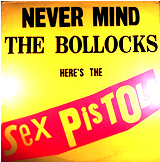

Blast
was written by self-styled ‘Primitive Mercenaries’ (p30), savage artists mingling
in the ‘enormous, jangling, journalistic fairy desert of modern life’ (p33).
In the glorious pink volume of Blast no.1 (of only 2) Ezra Pound presents
some condensed Imagist poems on colour, artifice and chemicality.

Women
Before a Shop
The gewgaws
of false amber and false turquoise attract them,
Like to
like nature. These agglutinous yellows.
L’Art
Green
arsenic smeared on an egg-white cloth,
Crushed
strawberries! Come let us feast our eyes.
The
New Cake of Soap
Lo, how
it gleams and glistens in the sun
Like the
cheek of a Chesterton.
(all in Blast
1, 49)
These slogan
poems cough up the major concerns of London Vorticism. In the first poem, consuming
women are attracted to baubles, to the fakery of the commercial, a cheap trick
to pull in the punters. They are attracted because they themselves no different,
like eyes up like, each as artificial, false and hideous as the other. The second
poem vituperates against art – in the modish French sense – as a mélange
of poisonous tint and damaged nature on canvas. A feast for the eyes indeed
bitterly evokes a deadly mess, of faked and ruined nature for those who know
no better. The third poem parodies formal appreciation on the part of art lovers,
by conceiving the aesthetic pleasures of bar of soap, cleanliness being its
aim, just like the good clean English middle-class fun of G.K. Chesterton.
For direct influence between the old guard punk and the purveyors of English
Vorticism, see the following: Mark E. Smith, "Heroes, part I: His Influences"
Melody Maker, Sept. 27, 1986, p. 33
'He was a funny old stick, Wyndham Lewis, the most underrated writer this
century. I can't believe how good his stuff is when I'm reading it. He was
a much better writer than he was a painter. People always say that Paul Morley
ripped off Lewis, which is bollocks. WE ripped off Lewis, and Morley stole
his ideas from us! The thing that pissed me off is that ZTT uses his ideas
and then put them into a context that Lewis would have hated. He loathed the
futurists. His stories are great; things like 'The Crowd Master' in Blast.
What a great title for a story. Wyndham Lewis is so real and so now. He wrote
a book about Hitler in 1934 saying that this is maybe the way forward and
was condemned during and after the war for being a Nazi. Yet in another book,
'Rotting Hill', he says he wrote an essay in 1938 to say that he was completely
wrong and that Hitler had to be stopped. The critics made sure he was only
remembered one way - the wrong way. He was a real man though. He'd always
be the first to condemn himself if he got something wrong. He went for the
critics before they went ever got to him. I like people than can admit to
their mistakes. When people ask me about The Fall back in '77 and the whole
punk thing I say it was shit. Everyone hated us. Punk bands hated us. Even
we hated us! I'm not going to lie about it. It's hard, but I like people that
are real and tell the truth. His books are hard to read but if you stick with
them they're great. "Rude Assignment' - what a title! 'Rotting Hill'
is the greatest phrase I've heard in my life. It's so simple you'd never think
of it. The things he was talking about in 1911, people are just beginning
to talk about now. A man years ahead of his time.'
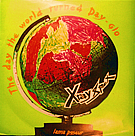
Pound had
been requested to submit some ‘nasty’ poems to Blast. (see Cork, Vorticism).
The nastier the poems the better. But in what does their nastiness lie: in the
reference to the modern age’s fakery and chemical inauthenticity. This acerbic
squeal found an echo 60 years later in Polystyrene’s lyrical rejection of germ-free
adolescence and postwar plastics, engine of a new economy, in ‘The Day the World
Turned Dayglo’ – a chemical retort to the internalized hippy-trip of ‘Lucy in
the Sky with Diamonds’:

I
clambered over mounds and mounds
Of
polystyrene foam
Then
fell into a swimming pool
Filled
with fairy snow
And
watched the world turn
Day-glo
you know you know
The
world turned day-glo you know
I
wrenched the nylon curtains back
As
far as they would go
Then
peered through Perspex window panes
At
the acrylic road
I
drove my polypropylene car
On
wheels of sponge
Then
pulled into a Wimpy bar
To
have a rubber bun
The
x-rays were penetrating
Through
the Latex breeze
Synthetic
fibre see-thru leaves
Fell
from the rayon trees
Polystyrene
woke up in a world that was synthetic, just as the Vorticists had woken up in
a world that was machinic. While Lewis publicly scorned Marinetti’s ‘Futurist
gush over machines, aeroplanes, etc.’ he was impressed by Marinetti’s idea that
humans are changed by living in cities with communications and transport at
their disposal, and affirms a dada manifesto from 1918 which describes the dada
sound poem as the sheer noise of urban existence, the screech of tram brakes,
which wipe out traces of old-style individuality. In Vorticist stylisation the denial of the human form is executed in a heightening
of the flat surface of the image, and in a paring down of the elements involved.
Lewis presents the human form like girders and industrial shapes. He writes:
THE ACTUAL HUMAN BODY BECOMES OF LESS IMPORTANCE EVERY DAY. It now literally
EXISTS much less. Lewis headed towards a sort of masculinized androgynousness.
Interiority is expelled like dust by a sharp gust of Blastish air.‘Never
trust a hippy’ cautioned a Jamie Reid poster in lurid yellow - its exhortation
was against nature.
It is irresistible. Lewis in ‘The London Group’ insisted on ‘LIFE not ‘Old Masters’
and the rejection of art which is dead with heavy woodness or stone, instead
- 'here flashing and eager flesh, shiny metal.' (Blast p77) Shiny metal,
chrome had paled as the 50s Americana dream was tarnished, but plastics were
the new flexible friend of global economies. Punk’s postwar version of Lewis’
material desideratum forwarded not the machinic society but the plastic consumer
society. Polystyrene again:
In Vorticist stylisation the denial of the human form is executed in a heightening
of the flat surface of the image, and in a paring down of the elements involved.
Lewis presents the human form like girders and industrial shapes. He writes:
THE ACTUAL HUMAN BODY BECOMES OF LESS IMPORTANCE EVERY DAY. It now literally
EXISTS much less. Lewis headed towards a sort of masculinized androgynousness.
Interiority is expelled like dust by a sharp gust of Blastish air.‘Never
trust a hippy’ cautioned a Jamie Reid poster in lurid yellow - its exhortation
was against nature.
It is irresistible. Lewis in ‘The London Group’ insisted on ‘LIFE not ‘Old Masters’
and the rejection of art which is dead with heavy woodness or stone, instead
- 'here flashing and eager flesh, shiny metal.' (Blast p77) Shiny metal,
chrome had paled as the 50s Americana dream was tarnished, but plastics were
the new flexible friend of global economies. Punk’s postwar version of Lewis’
material desideratum forwarded not the machinic society but the plastic consumer
society. Polystyrene again:
I
know I’m artificial
But
don’t put the blame on me
I
was reared with appliances
In
a consumer society
…
My
existence is illusive
The
kind that is supported
By
mechanical resources
…
I
wanna be instamatic
I
wanna be a frozen pea
I
wanna be dehydrated
In
a consumer society
Despite its
lurid appearance, The cover of Never Mind the
Bollocks was no cheap thrown together item – it relied on modern painterly
technologies. The printing process was difficult, because yellow is a ‘notoriously
bad colour to print as it shows up any impurities in the process very clearly.
And, although the sleeve gives the impression of being simple, it uses a series
of complex overlays. Fluorescent colours are hard to print as well, which doubled
the difficulty.’ (from The Incomplete Works of Jamie Reid p79). Reid
also says: ‘It was a feature of the finished sleeve that it deteriorated very
quickly: if left out in the sunlight, the yellow and the pink faded, just leaving
the black of the overlays.’ (p79)
Evanescence
and the mystique of fleeting intensity was arguably a core modernist theme,
and Lewis had affirmed it already in a comment of his in the essay ‘Futurism,
Magic and Life’ (Blast 1, p134) where he notes how the most perishable
colours in painting (such as Veronese green, Prussian Blue, Alizarin Crimson)
are the most brilliant. So that which burns brightest burns most briefly, and
in true modernist fashion brilliance must be but fleeting, timely, not eternal,
a coincidence of moment, viewer and object. Lewis proclaims of this: ‘This is
as it should be: we should hate other ages, and don’t want to fetch £40,000
like a horse" – asserting the desire not to be commodified and not to become
a part of the archive.
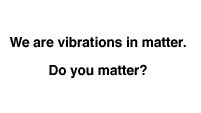

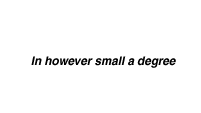

For Reid and
the Sex Pistols, the painstaking work on the cover paid off, for the sleeve
caused a fuss when it came out – mainly because it appeared to be the opposite
of what it was – shoddy, cheap and nasty – and also because it had an anonymity
as its theme – not only the cut out blockish – Blast-ish or newspaper
headline lettering – but also the lack of stars’ on the cover. No phosphorescent
stars sending back their celebrity light to illuminate the gloom of adolescent
fantasy – as The Clash, getting it so wrong would do with their first LP. The
Sex Pistols, of course, did enstage themselves, not on the covers but elsewhere
– however this self-display refused interiority, turning their selves into mannequins,
for Westwood’s clothes, McLaren’s game.

B:Interiority
is the last refuge of the petit bourgeois, as any reader of Ian Penman knows.
What Home objects to as the ‘anarcho-fascist’ politics of Punk is actually the
ideology of individualists and careerists - music journalists, record-company
men and petty academics - who refused to accept that Punk begged questions about
the wider class struggle. At the time, Rock Against Racism was not an option
anyone could refuse who was attendant to confusions created by McLaren’s use
of the swastika. Of course, it is now common knowledge
in Cultural Studies that Rock Against Racism was
manipulative, racist and oppressive to minorities, a historical revision which
could only be undertaken by people who never found themselves in a punk club
ordering drinks at the bar next to a British Movement organiser who is wearing
a union-jack-plus-swastika sticker, and harassing the Sikh behind the bar. Home
is these days gleefully separating himself from anarchism and calling himself
a council communist, but his situationist-derived fear of Leninism - a misconstruction,
since Guy Debord’s polemics were directed against the French Communist Party,
not the SWP - meant that he could not endorse Rock Against Racism at the time.
Having argued himself out of the swamps of anarchism, Home faces a stark political
choice between Leninism and liberalism
(in the absence of any contemporary current, his claim to be a "council
communist" amounts to political abstentionf).
Historically,
"radicals" like Crass who refused to take sides soon revealed themselves
as petit-bourgeois parasites eager to finance their own lives of "individual
freedom" in Ongar, Epping Forest - and, in
the case of the Poison Girls, the Sierra Nevada - through the proceeds of their
musical activities. Unlike subsequent imitations such as Red Wedge and Live
Aid, Rock Against Racism was not organised in order to promote stars and sell
records. It used the generalised impact of Punk - the formation of countless
bands looking for places to play - and struck bargains where a band’s desire
for exposure was exchanged for an explicit stand against racism. Of course,
there was much confusion and debate about race and class and integrity in these
bargains, but the emergence of Two Tone
proved that the idea of punky-reggae
parties - usually a couple of punk bands and a sound system - resulted from
real social interaction rather than marketable imagery. A comparison of the
revolutionary politics of Two Tone and On-U Sound - labels dedicated to racial
miscegenation - and, say, Factory or Creation
Records, demonstrates how even tacit racism holds back political consciousness
in popular music.
Why is the
radical working-class politics of Two Tone and On-U Sound not reflected in the
species of mixed-race cybermusic - house, acid, rave - celebrated by Kodwo Eshun?
The answer is that mystification
about the source of music via the commodity of the recorded format
suppresses the singularity of event that is required for political consciousness
and historical action. Disco and rave force consciousness inward and merely
facilitate mass drug-taking: individual solipsism and public idiocy. Hip Hop,
on the other hand, by making rhythmic interruption a source of pleasure and
continuity, is a revenge of the particular situation upon the generality of
the commodity. When the DJ scratches the record, all the preordained momentum
of a commodified music is suspended, allowing for the tabula rasa immediacy
which is the moment of authentic modern art - from the theatre of the absurd
through to Free Improvisation, a matter of creating pertinent situations.
E: In Punk
hi and lo clash – they do not meld in a postmodern paradise. If the Situationists
are victory, punk is the tragedy, and postmodernism the farce. With punk died
truly righteous anger, the righteous anger that can say, as did Mark P. in a
1977 issue of Sniffin Glue (now quoted in the OED): ‘The sickest thing
is the Zandra Rhodes "punk chic" look.’. That can say, as Sid Vicious
did, "All Hollywood films are complete bollocks, the actors are only pretending."
B: General
recognition of the artistic depth and instrumental effectiveness of the Sex
Pistols and their records has led to many attempts to repeat their ‘moment’.
Whatever Home says about them, the Pistols are the reason we’re having this
conference. Without them, Punk would have been pub rock or American torn-tie
bohemia. One strand of interpretation decided that scandal, riot and offense
were the essence of Punk’s difference from rock music as normal. When Descension
- a band of cacophonic
free improvisors, including the guitarist from Whitehouse - supported Sonic
Youth at The Forum, they caused a riot among the fans. Thurston Moore skipped
up to the dressing room - ‘Gee, was that what the Sex Pistols were like?’. Actually,
as Steve Jones said towards the end of their brief period of media exposure,
‘What everyone seems to have forgotten is that the Pistols are actually rather
a fine dance band’.
When I saw the Pistols at the Royal Links Pavilion in Cromer, Norfolk, on Christmas
Eve 1977, they played an immaculate set, probably the best rehearsed rock band
I’ve seen outside the Magic Band, Devo and Bow Wow Wow. When
they named their album Never Mind The Bollocks, the Pistols meant that the media
furore and their own shenanigans were to be ignored. The essence of their statement
was sonic. The idea of them as merely a media event is a postmodernist evasion
of musical materialism.

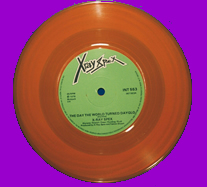 The
Day-Glo
coloured vinyl
punk record is not a black hole or empty meaning,
but a circular assertion of anti-nature, of synthetic actuality. The record,
which had been forgotten as item, as disc, is brought back into visibility,
by the coloured vinyl – of course in combination with the miniature artwork
of the picture cover. This should not be confused with later attempts to stimulate
collectability and sales with picture discs or limited editions. The coloured
disc hoped to detonate a mini-shock, at least a surprise as it was slipped from
the cover. The record stopped being natural, a hippy dream where the listener
gazes at beautiful people photographed against shrubs and trees, the hippy dream
of an unsullied life. Punk made pop music historical and artificial once more.
It devastated the romantic idyll.
The
Day-Glo
coloured vinyl
punk record is not a black hole or empty meaning,
but a circular assertion of anti-nature, of synthetic actuality. The record,
which had been forgotten as item, as disc, is brought back into visibility,
by the coloured vinyl – of course in combination with the miniature artwork
of the picture cover. This should not be confused with later attempts to stimulate
collectability and sales with picture discs or limited editions. The coloured
disc hoped to detonate a mini-shock, at least a surprise as it was slipped from
the cover. The record stopped being natural, a hippy dream where the listener
gazes at beautiful people photographed against shrubs and trees, the hippy dream
of an unsullied life. Punk made pop music historical and artificial once more.
It devastated the romantic idyll.
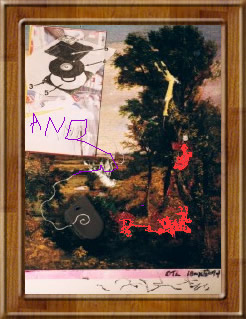
With punk
the single came back into its own – famously ousting the concept album’s languor.
It was an assertion of vinyl importance, before or beyond the concept. It understood
itself as the short sharp shock, just as Wyndham Lewis before it had understood
the end of painterly duration for producers and consumers in ‘Orchestra of Media’,
which insisted on abandoning oil paint in favour of other instruments and media.
‘The surfaces
of cheap manufactured goods, woods, shell, glass etc already appreciated
for themselves and their possibilities realised, have finished the days
of fine paint.’ (Blast p142)
Punk’s equivalent
was plastic and formica. Though the point was not
to represent it as such, but to appreciate it in itself.
B: This materialism
extended to the sound. The musical power of the Sex
Pistols was utterly shocking. Cook and Jones managed
to reproduce the push’n’pull of adults fucking, the objective, mindless, ineluctable
squelch of what Wilhelm Reich called ‘cosmic plasmatic sensation’ - a sound
designed to terrify infants and fascinate adolescents.
 When
Caroline Coon told Sniffin’ Glue’s editor Mark P about the Pistols, he thought
they were about dyed hair, and wasn’t interested. However, when he saw them
he couldn’t believe how arrogant they were, how exciting and powerful. Like
everyone else who saw the Pistols, he had to go off and form his own band. Of
course, the cyberwallflowers of the post-cyber Popsicle Academy are unimpressed
by such events. Apparently being excited by loud guitars is simply a recipe
for Britpop boy bands. In this regard, comparison between the rock texturation
of Oasis and the Pistols is illuminating. The Pistols are a diabolical piston,
an active reprimand to the Platonic discorporate Ideal, a sexuo-alchemical catalytic
converter, a dialectical-materialist physical heave-ho; Oasis are a blinkered
body, sullenly mired in a single inert power chord, unable to thrust either
harmonically or rhythmically. Noel Gallagher learned from Kurt Cobain how to
smother the collective dialectic of rock in a single individual's vocal suffering,
restoring interiority and emotion, expression as private property. Of course,
the industry prefers such music, it fits its ideology of possessive individualism,
where award ceremonies look more and more like stock-exchange reports. However,
as Marx said in The German Ideology, 'The difference between the individual
as a person and whatever is extraneous to them is not a conceptual difference,
but a historical fact.' [Marx, The German Ideology, Ed. Cit., p. 81]. Individualism
is not a style option, it is a stance vis-a-vis the struggle of classes. As
Johnny Rotten said, criticising music journalists: 'These writers have never
been in bands, and they have never really committeed themselves to other people
in such close quarters. They're more like solo performers, and there ain't no
such thing as that in any band ... I don't care how big-headed the lead singer
is, it all comes down to the fact that he must eat shit in a rehearsal room.
The histrionics of the lead guitar, the excesses of the drummer and the stupidity
of the bass player have to mix on an equal footing.' [John Lydon, Rotten: No
Irish, No Blacks, No Dogs, London: Hodder & Stoughton, 1993, pp. 159-160].
When
Caroline Coon told Sniffin’ Glue’s editor Mark P about the Pistols, he thought
they were about dyed hair, and wasn’t interested. However, when he saw them
he couldn’t believe how arrogant they were, how exciting and powerful. Like
everyone else who saw the Pistols, he had to go off and form his own band. Of
course, the cyberwallflowers of the post-cyber Popsicle Academy are unimpressed
by such events. Apparently being excited by loud guitars is simply a recipe
for Britpop boy bands. In this regard, comparison between the rock texturation
of Oasis and the Pistols is illuminating. The Pistols are a diabolical piston,
an active reprimand to the Platonic discorporate Ideal, a sexuo-alchemical catalytic
converter, a dialectical-materialist physical heave-ho; Oasis are a blinkered
body, sullenly mired in a single inert power chord, unable to thrust either
harmonically or rhythmically. Noel Gallagher learned from Kurt Cobain how to
smother the collective dialectic of rock in a single individual's vocal suffering,
restoring interiority and emotion, expression as private property. Of course,
the industry prefers such music, it fits its ideology of possessive individualism,
where award ceremonies look more and more like stock-exchange reports. However,
as Marx said in The German Ideology, 'The difference between the individual
as a person and whatever is extraneous to them is not a conceptual difference,
but a historical fact.' [Marx, The German Ideology, Ed. Cit., p. 81]. Individualism
is not a style option, it is a stance vis-a-vis the struggle of classes. As
Johnny Rotten said, criticising music journalists: 'These writers have never
been in bands, and they have never really committeed themselves to other people
in such close quarters. They're more like solo performers, and there ain't no
such thing as that in any band ... I don't care how big-headed the lead singer
is, it all comes down to the fact that he must eat shit in a rehearsal room.
The histrionics of the lead guitar, the excesses of the drummer and the stupidity
of the bass player have to mix on an equal footing.' [John Lydon, Rotten: No
Irish, No Blacks, No Dogs, London: Hodder & Stoughton, 1993, pp. 159-160].

When the
Pistols played in Cromer, they did not provoke chaos or offend their audience.
They played a sleek, strong, impressive set. Rotten relished every word of his
lyrics, Sid Vicious managed to keep time. Before
they came on, they played dub plates through the PA. Only the defiant proletarian
militancy of dub could be adequate to the Pistols’ power-chord rhetoric. The
ruin of the F-Club at Brannigans in Leeds was spelt out when the DJ played David
Bowie and Blondie after the bands: petitbourgeois aspiration and showy individualism
was built into the rightwing interpretation of Punk, and its connections to
fascism were not hard to discern. In Leeds, Rock
Against Racism was an aesthetic and political necessity.


The recuperation
of the rock power-chord by radio-friendly corporate rock acts has currently
reached an epitome of stupidity. Stewart Home's political critique of Punk requires
an injection of musical criticism. The rock power-chord needs to be criticised
immanently, from the inside, which means opening the ear to Derek Bailey's guitarism.
Derek Bailey's guitar freedom could only have been
developed by someone who rejects the narrow confines of the star system, by
someone who sees musical potential in every situation, unhampered by commercial
image and the requirements of investment capital. His investigation of the guitar
as material sound source produces a depthless music of sonic effect, a proletarian,
working-musicians's realism. Like punk, it denies romantic resonance or fraudulent
evocations of exotic terrains - the exchange-value basis of commodified music.
Like punk, the attempt to create stars out of its
protagonists undermines its power and logic. When punks followed The Damned's
saxophonist Lol Coxhill into the church halls and pub rooms of Free Improvisation,
the listener was introduced to a completely different but equally powerful criticism
of the commercial spectacle. Free Improvisation is music as listening use value,
as touchable humanity. (How Free Improvisation will deal with its own recuperations
and discontents - the respective lures of art money, yuppie ambient anaemia,
traditional-instrument classicism and installation-art postmodernism - is still
being worked out.) Just as the Lettrists and Situationists made Punk possible
by their invisible work in the 1950s - understanding graffiti and vandalism
as expressions of proletarian consciousness, unitary urbanism, the theory of
the Spectacle - the anti-idiomatic 'non-music'
of Free Improvisation will be crucial to criticism of musical commodification
in the coming epoch. Bailey's restructuring of guitar sound upsets identity-thinking
and denaturalises today's commonly-accepted 'sound of revolt'. It undermines
the assumption that musical experience hinges on the purchase of pre-recorded
sound. Free Improvisation is an eruption of naked use value in a system of prurient
exchange. This revolt against mass-musical duplicity and commodification will
resurface in the most unlikely circumstances, not least in the mass sphere itself.
It will use every aspect of disrespect for the commodity - every technical denial
of culture as a tissue of substitutions - which are currently being worked out
on the invisible margins. The brute facticity of
Blast and Punk and
Derek Bailey are part of an active continuum that cannot be understood using
non-revolutionary categories. You have been warned.

(B=Ben Watson;
E=Esther Leslie)
Get
You Back Home
 B:
When formulating his ideas about money and capital - sketches for the great
work Capital which were eventually published under the name Grundrisse - Karl
Marx developed a critique of conventional ways of writing history. When people
relate history as a succession of events unfolding in time, they distort reality
by assuming that concepts that were actually the
product of historical developments were always in existence. He complained that
people project back concepts like human equality, money-making and commercial
calculation into the mists of time, when these are actually only possible once
there is an infrastructure of trade, roads and manufacture. If Punk
is approached retrospectively as a successful pop
phenomenon, a fashion wave, a raft of new celebrities, our understanding is
coloured by a similar kind
of back projection. Commercialised anger didn't exist before punk - rap would
have been impossible without it - and situationist ideas now accepted as commonplace
were inaccessible to anyone but intellectuals. At
the time, Punk felt like risk and truth, not scam, celebrity and money.
B:
When formulating his ideas about money and capital - sketches for the great
work Capital which were eventually published under the name Grundrisse - Karl
Marx developed a critique of conventional ways of writing history. When people
relate history as a succession of events unfolding in time, they distort reality
by assuming that concepts that were actually the
product of historical developments were always in existence. He complained that
people project back concepts like human equality, money-making and commercial
calculation into the mists of time, when these are actually only possible once
there is an infrastructure of trade, roads and manufacture. If Punk
is approached retrospectively as a successful pop
phenomenon, a fashion wave, a raft of new celebrities, our understanding is
coloured by a similar kind
of back projection. Commercialised anger didn't exist before punk - rap would
have been impossible without it - and situationist ideas now accepted as commonplace
were inaccessible to anyone but intellectuals. At
the time, Punk felt like risk and truth, not scam, celebrity and money.


 In the
1950s the name Day-Glo was trademarked and in the late 1960s the company formally
changed its name from Switzer Bros Inc to Day-Glo Colour Corp. In their names
one can hear the poetry of science, industry and space exploration. The full
trademarked pigment set comprises Neon Red, Rocket Red,
Fire Orange, Blaze Orange, Arc Yellow, Saturn Yellow, Signal Green, Horizon
Blue, Aurora Pink, Corona Magenta, Strong Corona Magenta, Strong Saturn Yellow.
Day-Glo
first infiltrated the American landscape as entertainment then as an alert to
danger and later as commodity shriek. A fan of Ultraviolet light, who runs a
website dedicated to its discussion, writes of a trip to Disneyland in the Summer
of 1961. There he rode through psychedelic landscapes - such as the Alice
in Wonderland ride - made of Day-Glo
scenes extra-illuminated
under u.v. light. Day-Glo
fluorescent paint was
fairly easy to get hold of in the 1960s - it became a household word through
Tom Wolfe’s book on Ken Kesey and the Pranksters. It remained a bad taste product,
acceptable only to commercial art, where Psychedelia found a use for it in posters
and it found its way into film. In the entry on the word Day-Glo
the OED quotes an article
from the Listener, from 1968, which condemns the use of flashing Day-Glo
colours as vulgar signal
of an orgasm in a film by Jack Cardiff. The hippies used Day-Glo
in their cultural artefacts,
and even on their bodies, but theirs was an attempt to paint over the world
in the colours of their hallucinogenic trips. Day-Glo
was being taken into
the student bedroom, the kids’ blacklit den where individual mediation could
hinge on the wonders of a perceptual trick that disappeared when normal electricity
resumed.
In the
1950s the name Day-Glo was trademarked and in the late 1960s the company formally
changed its name from Switzer Bros Inc to Day-Glo Colour Corp. In their names
one can hear the poetry of science, industry and space exploration. The full
trademarked pigment set comprises Neon Red, Rocket Red,
Fire Orange, Blaze Orange, Arc Yellow, Saturn Yellow, Signal Green, Horizon
Blue, Aurora Pink, Corona Magenta, Strong Corona Magenta, Strong Saturn Yellow.
Day-Glo
first infiltrated the American landscape as entertainment then as an alert to
danger and later as commodity shriek. A fan of Ultraviolet light, who runs a
website dedicated to its discussion, writes of a trip to Disneyland in the Summer
of 1961. There he rode through psychedelic landscapes - such as the Alice
in Wonderland ride - made of Day-Glo
scenes extra-illuminated
under u.v. light. Day-Glo
fluorescent paint was
fairly easy to get hold of in the 1960s - it became a household word through
Tom Wolfe’s book on Ken Kesey and the Pranksters. It remained a bad taste product,
acceptable only to commercial art, where Psychedelia found a use for it in posters
and it found its way into film. In the entry on the word Day-Glo
the OED quotes an article
from the Listener, from 1968, which condemns the use of flashing Day-Glo
colours as vulgar signal
of an orgasm in a film by Jack Cardiff. The hippies used Day-Glo
in their cultural artefacts,
and even on their bodies, but theirs was an attempt to paint over the world
in the colours of their hallucinogenic trips. Day-Glo
was being taken into
the student bedroom, the kids’ blacklit den where individual mediation could
hinge on the wonders of a perceptual trick that disappeared when normal electricity
resumed. It
took punk to fully assimilate Day-Glo
without transforming
it - that is vulgarity and all - in fact because of its bargain-basement, eye-catching
impudence. Jamie Reid’s cover for Never Mind the Bollocks
modelled itself on a crude supermarket display. This was consumer society staring
itself in the face. Art, as ever, was behind the times when Peter Halley began
to use Day-Glo
paints in his abstractions
in the 1980s. Punk had already camouflaged itself in the colours of the antagonist.
It
took punk to fully assimilate Day-Glo
without transforming
it - that is vulgarity and all - in fact because of its bargain-basement, eye-catching
impudence. Jamie Reid’s cover for Never Mind the Bollocks
modelled itself on a crude supermarket display. This was consumer society staring
itself in the face. Art, as ever, was behind the times when Peter Halley began
to use Day-Glo
paints in his abstractions
in the 1980s. Punk had already camouflaged itself in the colours of the antagonist.


 In
1914, a member of the Rebel Art Centre, Wyndham Lewis launched a Vorticist magazine.
Lewis’ Blast was supposed to be a celebration of the blast furnaces of
the industrialized Midlands and North. Blast also suggests a hygienic
gale from the North. The emblematic representation of the vortex on the first
pages of Blast is a figuration of a storm-cone with the apex up: a signal
used by coastguards to represent strong winds from the north. Blast lends
perhaps the visual and polemical aesthetic of the punk fanzines. Blast
– with its glorious outrageously luridly pink cover and heavy anonymous blockish
black typography and polemical rants – was just as shocking as the Sex Pistols
Never Mind the Bollocks LP cover.
In
1914, a member of the Rebel Art Centre, Wyndham Lewis launched a Vorticist magazine.
Lewis’ Blast was supposed to be a celebration of the blast furnaces of
the industrialized Midlands and North. Blast also suggests a hygienic
gale from the North. The emblematic representation of the vortex on the first
pages of Blast is a figuration of a storm-cone with the apex up: a signal
used by coastguards to represent strong winds from the north. Blast lends
perhaps the visual and polemical aesthetic of the punk fanzines. Blast
– with its glorious outrageously luridly pink cover and heavy anonymous blockish
black typography and polemical rants – was just as shocking as the Sex Pistols
Never Mind the Bollocks LP cover.




 In Vorticist stylisation the denial of the human form is executed in a heightening
of the flat surface of the image, and in a paring down of the elements involved.
Lewis presents the human form like girders and industrial shapes. He writes:
THE ACTUAL HUMAN BODY BECOMES OF LESS IMPORTANCE EVERY DAY. It now literally
EXISTS much less. Lewis headed towards a sort of masculinized androgynousness.
Interiority is expelled like dust by a sharp gust of Blastish air.‘Never
trust a hippy’ cautioned a Jamie Reid poster in lurid yellow - its exhortation
was against nature.
It is irresistible. Lewis in ‘The London Group’ insisted on ‘LIFE not ‘Old Masters’
and the rejection of art which is dead with heavy woodness or stone, instead
- 'here flashing and eager flesh, shiny metal.' (Blast p77) Shiny metal,
chrome had paled as the 50s Americana dream was tarnished, but plastics were
the new flexible friend of global economies. Punk’s postwar version of Lewis’
material desideratum forwarded not the machinic society but the plastic consumer
society. Polystyrene again:
In Vorticist stylisation the denial of the human form is executed in a heightening
of the flat surface of the image, and in a paring down of the elements involved.
Lewis presents the human form like girders and industrial shapes. He writes:
THE ACTUAL HUMAN BODY BECOMES OF LESS IMPORTANCE EVERY DAY. It now literally
EXISTS much less. Lewis headed towards a sort of masculinized androgynousness.
Interiority is expelled like dust by a sharp gust of Blastish air.‘Never
trust a hippy’ cautioned a Jamie Reid poster in lurid yellow - its exhortation
was against nature.
It is irresistible. Lewis in ‘The London Group’ insisted on ‘LIFE not ‘Old Masters’
and the rejection of art which is dead with heavy woodness or stone, instead
- 'here flashing and eager flesh, shiny metal.' (Blast p77) Shiny metal,
chrome had paled as the 50s Americana dream was tarnished, but plastics were
the new flexible friend of global economies. Punk’s postwar version of Lewis’
material desideratum forwarded not the machinic society but the plastic consumer
society. Polystyrene again:





 The
Day-Glo
coloured vinyl
punk record is not a black hole or empty meaning,
but a circular assertion of anti-nature, of synthetic actuality. The record,
which had been forgotten as item, as disc, is brought back into visibility,
by the coloured vinyl – of course in combination with the miniature artwork
of the picture cover. This should not be confused with later attempts to stimulate
collectability and sales with picture discs or limited editions. The coloured
disc hoped to detonate a mini-shock, at least a surprise as it was slipped from
the cover. The record stopped being natural, a hippy dream where the listener
gazes at beautiful people photographed against shrubs and trees, the hippy dream
of an unsullied life. Punk made pop music historical and artificial once more.
It devastated the romantic idyll.
The
Day-Glo
coloured vinyl
punk record is not a black hole or empty meaning,
but a circular assertion of anti-nature, of synthetic actuality. The record,
which had been forgotten as item, as disc, is brought back into visibility,
by the coloured vinyl – of course in combination with the miniature artwork
of the picture cover. This should not be confused with later attempts to stimulate
collectability and sales with picture discs or limited editions. The coloured
disc hoped to detonate a mini-shock, at least a surprise as it was slipped from
the cover. The record stopped being natural, a hippy dream where the listener
gazes at beautiful people photographed against shrubs and trees, the hippy dream
of an unsullied life. Punk made pop music historical and artificial once more.
It devastated the romantic idyll.
 When
Caroline Coon told Sniffin’ Glue’s editor Mark P about the Pistols, he thought
they were about dyed hair, and wasn’t interested. However, when he saw them
he couldn’t believe how arrogant they were, how exciting and powerful. Like
everyone else who saw the Pistols, he had to go off and form his own band. Of
course, the cyberwallflowers of the post-cyber Popsicle Academy are unimpressed
by such events. Apparently being excited by loud guitars is simply a recipe
for Britpop boy bands. In this regard, comparison between the rock texturation
of Oasis and the Pistols is illuminating. The Pistols are a diabolical piston,
an active reprimand to the Platonic discorporate Ideal, a sexuo-alchemical catalytic
converter, a dialectical-materialist physical heave-ho; Oasis are a blinkered
body, sullenly mired in a single inert power chord, unable to thrust either
harmonically or rhythmically. Noel Gallagher learned from Kurt Cobain how to
smother the collective dialectic of rock in a single individual's vocal suffering,
restoring interiority and emotion, expression as private property. Of course,
the industry prefers such music, it fits its ideology of possessive individualism,
where award ceremonies look more and more like stock-exchange reports. However,
as Marx said in The German Ideology, 'The difference between the individual
as a person and whatever is extraneous to them is not a conceptual difference,
but a historical fact.' [Marx, The German Ideology, Ed. Cit., p. 81]. Individualism
is not a style option, it is a stance vis-a-vis the struggle of classes. As
Johnny Rotten said, criticising music journalists: 'These writers have never
been in bands, and they have never really committeed themselves to other people
in such close quarters. They're more like solo performers, and there ain't no
such thing as that in any band ... I don't care how big-headed the lead singer
is, it all comes down to the fact that he must eat shit in a rehearsal room.
The histrionics of the lead guitar, the excesses of the drummer and the stupidity
of the bass player have to mix on an equal footing.' [John Lydon, Rotten: No
Irish, No Blacks, No Dogs, London: Hodder & Stoughton, 1993, pp. 159-160].
When
Caroline Coon told Sniffin’ Glue’s editor Mark P about the Pistols, he thought
they were about dyed hair, and wasn’t interested. However, when he saw them
he couldn’t believe how arrogant they were, how exciting and powerful. Like
everyone else who saw the Pistols, he had to go off and form his own band. Of
course, the cyberwallflowers of the post-cyber Popsicle Academy are unimpressed
by such events. Apparently being excited by loud guitars is simply a recipe
for Britpop boy bands. In this regard, comparison between the rock texturation
of Oasis and the Pistols is illuminating. The Pistols are a diabolical piston,
an active reprimand to the Platonic discorporate Ideal, a sexuo-alchemical catalytic
converter, a dialectical-materialist physical heave-ho; Oasis are a blinkered
body, sullenly mired in a single inert power chord, unable to thrust either
harmonically or rhythmically. Noel Gallagher learned from Kurt Cobain how to
smother the collective dialectic of rock in a single individual's vocal suffering,
restoring interiority and emotion, expression as private property. Of course,
the industry prefers such music, it fits its ideology of possessive individualism,
where award ceremonies look more and more like stock-exchange reports. However,
as Marx said in The German Ideology, 'The difference between the individual
as a person and whatever is extraneous to them is not a conceptual difference,
but a historical fact.' [Marx, The German Ideology, Ed. Cit., p. 81]. Individualism
is not a style option, it is a stance vis-a-vis the struggle of classes. As
Johnny Rotten said, criticising music journalists: 'These writers have never
been in bands, and they have never really committeed themselves to other people
in such close quarters. They're more like solo performers, and there ain't no
such thing as that in any band ... I don't care how big-headed the lead singer
is, it all comes down to the fact that he must eat shit in a rehearsal room.
The histrionics of the lead guitar, the excesses of the drummer and the stupidity
of the bass player have to mix on an equal footing.' [John Lydon, Rotten: No
Irish, No Blacks, No Dogs, London: Hodder & Stoughton, 1993, pp. 159-160].


